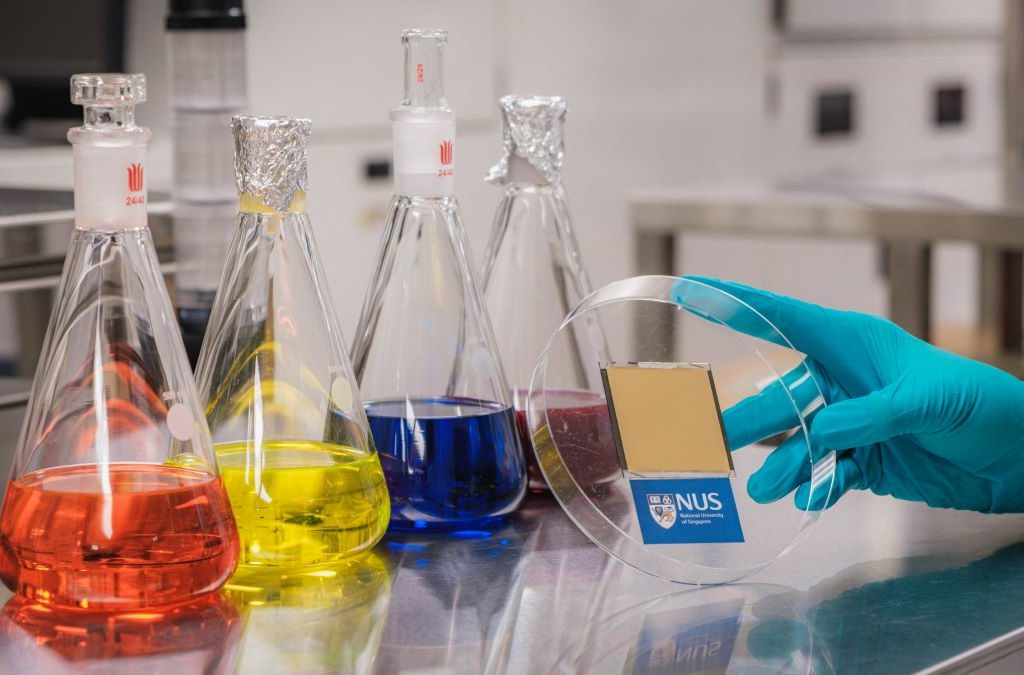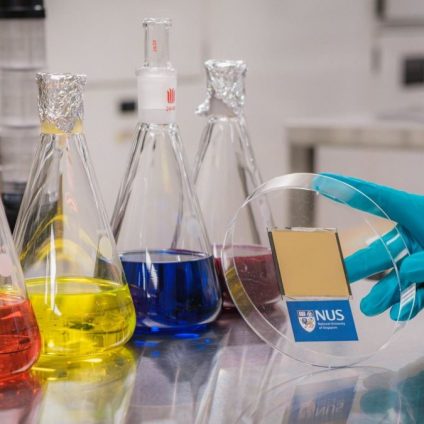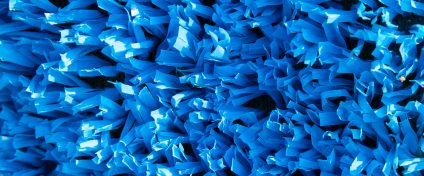A new narrow-band organic absorber has been engineered, enhancing near-infrared photon harvesting and achieving a record-breaking conversion efficiency.

A new organic absorber designed for near-infrared efficiency
A significant milestone has been reached in tandem photovoltaic technology. After major advances in pure perovskite solar cells, the industry now welcomes a new world record: perovskite-organic solar cells have achieved a 26.4% power conversion efficiency, the highest ever reported for this specific combination of semiconductors on a 1 cm² active area.
The breakthrough was made by a team of researchers at the National University of Singapore (NUS), who focused on improving the organic absorber.
Perovskite-organic solar cells
On paper, tandem solar cells combining perovskites and organic semiconductors are especially promising. The ability to tune the bandgap of both materials enables the design of solar cells with high theoretical efficiency and low cost, while avoiding the supply chain issues tied to crystalline silicon.
However, certified efficiencies of perovskite-organic solar cells have remained far below those of single-junction perovskite devices. Why? Mainly due to the limited photocurrent generated in the organic sub-cell. Since no efficient thin-film organic absorbers currently exist for the near-infrared spectrum, a substantial portion of incoming solar energy is lost.
A new asymmetric organic acceptor
To overcome this challenge, Professor Hou Yi and his team developed an asymmetric organic acceptor, named P2EH-1V, which features a sequence of alternating single and double bonds. This design allows electrons to move freely along the molecule, enhancing both light absorption and charge transport.
The molecule’s structure enables deeper photon absorption in the near-infrared range while maintaining sufficient driving force for effective charge separation. Spectroscopic analysis of the prototype cells confirmed that the design enables high free-charge carrier collection with minimal energy loss.
The researchers paired this new organic sub-cell with a high-efficiency perovskite top cell, linking the two through a transparent conductive oxide interconnect. The resulting tandem architecture achieved a 27.5% power conversion efficiency on 0.05 cm² samples and 26.7% on 1 cm² devices, with an independently certified result of 26.4%.
These are the highest certified performances ever reported for perovskite-organic, perovskite-CIGS, or single-junction perovskite solar cells of comparable size.
Potential applications of perovskite-organic solar cells
“With efficiency levels expected to exceed 30%, these flexible films are ideal for roll-to-roll production and seamless integration into curved or fabric substrates,” said Prof. Hou. “Think of self-powered medical patches that harvest sunlight to power embedded sensors, or smart textiles that monitor biometric data without bulky batteries.”
In the next phase of research, the NUS team will focus on improving real-world operational stability and moving toward pilot-scale manufacturing, two critical steps for bringing high-performance, flexible solar technology to market.
The NUS team published its findings in Nature on June 25, 2025.












